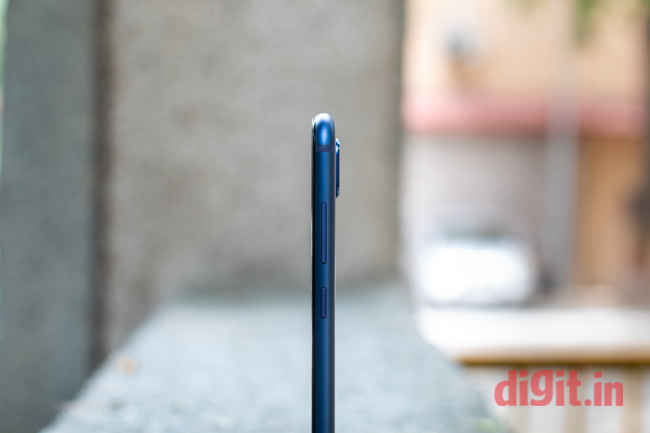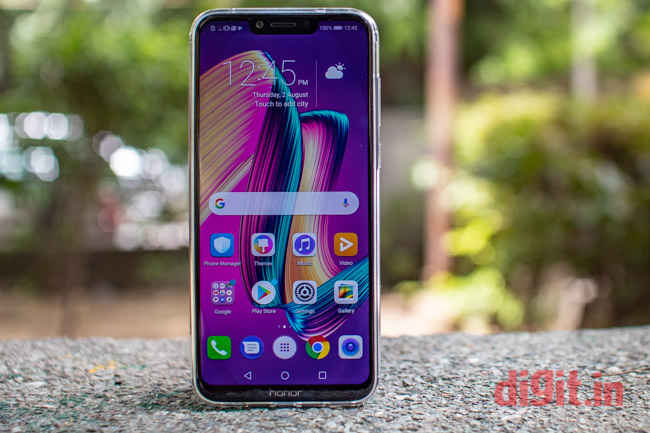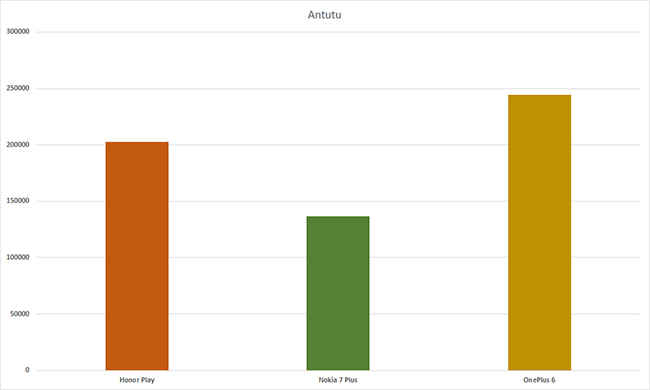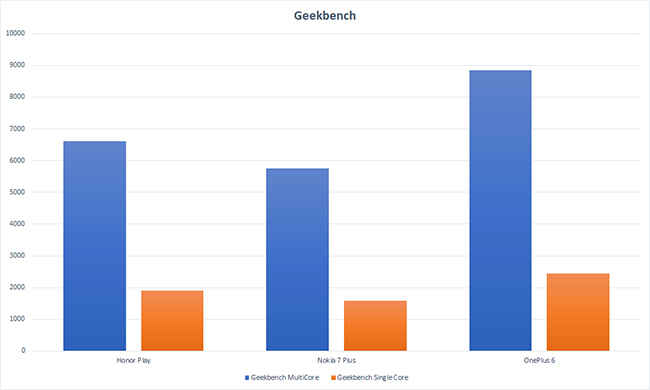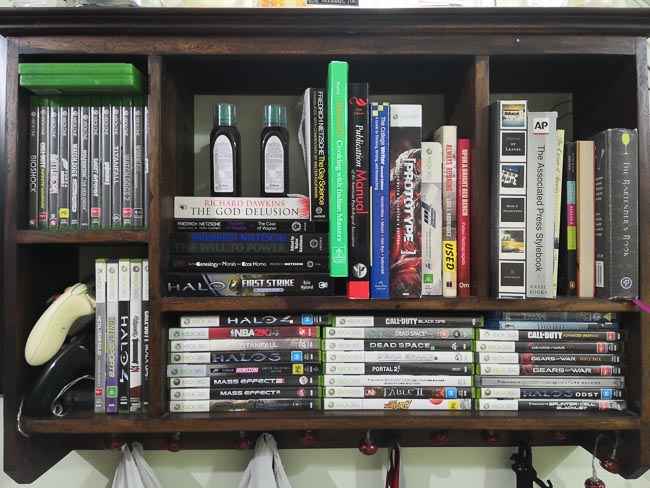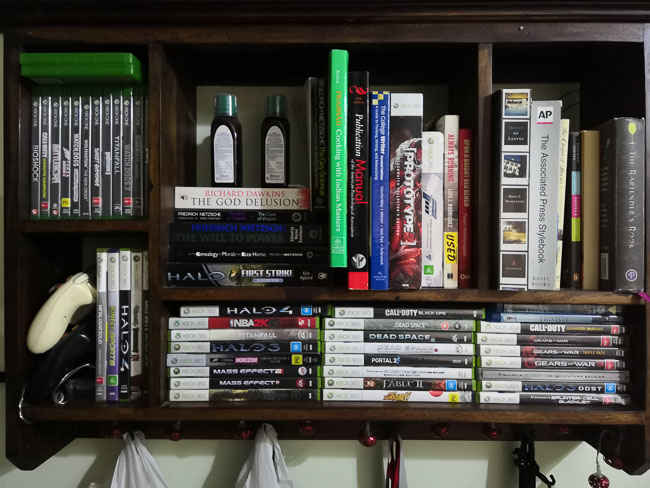Honor Play Review Review : Delivering on the promise of performance
The Honor Play brings the company’s flagship hardware to an even lower price point, making it the most powerful device under Rs 25,000. Add to it the GPU Turbo feature which reduces battery drain and you get a very lucrative device for gamers and those who like consuming a lot of visual content on their phones. While there’s a lot that impresses, the camera, leaves one wanting more.
Build and Design
Lift the Honor Play out of a box and the first thing you’re going to say is “THANK THE LORD!” Wondering why? Its because the Honor Play has a unibody aluminium construction, finally ditching glass as the choice of construction material on a phone that doesn’t even offer wireless charging. At just 7.5mm thick, the phone measures 6.3 inches diagonally and packs a 3750mAh battery, making its slim form factor quite an achievement.
In terms of design, the back of the phone is rather smooth and very minimal. The fingerprint sensor is mounted at a position that was easy and natural for me to reach, but a few colleagues who tried the phone said that it was a little higher than normal. There’s also a vertically mounted dual camera setup with a single LED flash under it. Interestingly, Honor has emblazoned the branding on this phone just like Huawei does, horizontally. At first glance, the Honor Play could be considered a distant metallic cousin of the Huawei P20 Pro. The antenna lines are etched right on the curves, which makes them hard to see, giving the back a very seamless look.
The front is obviously all glass since that’s the new trend. The volume and power buttons are placed on the right side, with the power button sitting just below the volume rocker. It would have been nice had Honor given the power button a textured finish. This would have made it easier to differentiate the buttons by just feeling them. The hybrid SIM tray slides into the left side of the phone’s frame, essentially disappearing into it. At the bottom, there’s the USB Type-C port which supports fast charging, a 3.5mm headphone jack and a mono speaker grill.
Overall, the build quality if the Honor Play is sturdy, solid and most of all, reassuring. The metal build might feel a little slippery, so Honor bundles a TPU case in the box for added grip and peace of mind. Overall, a big thumbs up to the Honor Play.
Display
The Honor Play comes packing a 6.3-inch IPS display. The resolution on this panel is 2340×1080, pegging its pixel density at 409 ppi. The 19.5:9 aspect ratio makes the large display easy to hold with one hand, although effective one-handed usage will be difficult unless you have big hands. The notch debate has been beaten to death, so if you’re someone who doesn’t like it, then you can just turn it off in the Display settings. This will create a black band across the notched area, which will continue to house the notification icons.
The display is adequately bright for using it outdoors, but unfortunately, it is prone to reflections. Things can get a little hard to see due to the reflective nature of the panel. However, if you can find some shade or uniformity, things should be more than legible. What helps with that is the colour uniformity and viewing angles, which are as good as you would expect from an IPS display. The display is nice and vibrant and if you’re not too fond of over-saturated colours, you can just dial them back to more natural tones from the Display settings.
I want to take a minute to talk about the notch, the new aspect ratio and how it will impact your movie watching experience. When you watch videos in landscape mode, you will get black bars on the sides, reverting your display back to a more traditional 16:9 aspect ratio and that's because most video content is still available only in this aspect ratio. If you watch something on YouTube, you can expand the video to fit the whole screen, which stops just below the notch making the display feel rather immersive. This will ever so slightly crop the video, so you may not want to do that. The black bars that are generated are actually helpful as they allow easier holding of the phone. What would have been nicer is if the smartphone companies figured out how to make this area of the display inactive so that we could actually hold our phones using the blank sides, allowing for better grip while watching videos in bed.
In conclusion, the Honor Play's display is functional and gets the job done brilliantly, whether it's for work, entertainment, or gaming. I spent a lot of time playing Asphalt 9: Legends and watching plenty of content on Netflix (Castlevania, Spectral and some episodes of Jessica Jones) and all of it looked absolutely brilliant. The bezel-less display does feel nice for content consumption and there will be little reason to feel dissatisfied.
Performance – GPU Turbo to the MAX?
The Honor Play comes packing Huawei’s top-of-the-line SoC, the Kirin 970. There’s also 6GB of RAM and 64GB of UFS 2.1 storage to maximise speed. The combination does show promising results, even in benchmark numbers where the phone scores 202639 in AnTuTu, not that far behind the OnePlus 6. Geekbench Single and Multi-Core numbers are also promising, with the Honor Play clocking 1901 and 6604 respectively.
The real draw for the Honor Play is the GPU Turbo feature. Since Huawei makes its own processors, it was able to reprogram the way the GPU handles render instructions. This has allowed the company to push out a feature which makes big claims of boosted gaming performance while also reducing battery drain. The claims are a little difficult to test when we don’t have a non-GPU Turbo enabled variant of the phone, so we tried to use the next best thing; the Huawei Nova 3 which we recently reviewed. Both the phones have identical processors, the same amount of RAM and the same amount of storage. Both the phones also share the same 3750mAh battery and the same display. Therefore, it is safe to assume that variance in battery drain would be minimal. Since PUBG is one of the only few games that support GPU Turbo, I played the game on both the phones. The Nova 3 does not have the GPU Turbo update yet, making it a good candidate for this comparison.
We used Gamebench to measure frame-rates and battery drain during the gaming session, which lasted 10 minutes on each phone. During the time, both the phones maintained a more or less steady 30fps, which is to be expected. However, where there was a genuine surprise was the low power-draw by the Honor Play. While the Huawei Nova 3 drew an average of 850mA in 9 minutes and 52 seconds of play time, the Honor Play drew only 677mA of current during a 10 minute 29 second session. There is definitely lower current draw here and this could be GPU turbo at work. Huawei and Honor’s goal is to extend GPU Turbo to be utilised by EMUI’s interface as well, further optimising battery life. Sadly, if you want to gain the benefit of GPU Turbo, the developer of your favourite game will have to work on enabling support for the feature. Even when playing other, non-GPU Turbo enabled games, the performance is extremely smooth and stutter free. This was tested on Asphalt 9, Injustice 2, Modern Combat 5 and even simple games like Alto’s Odyssey.
Moving onto the non-gaming aspect of the device, apps are quick to launch and switching apps is smooth. I had over 35 tabs open in Chrome, along with all the benchmarks and games open in the background, but I did not face any significant slowdowns. There’s little reason for complaints with EMUI 8.2 and the hardware inside the Honor Play as they together deliver very consistent and reliable performance.
Honor says there is also a feature called AI 4D Smart Shock which is going ot bring a new level of immersion for gamers. The feature will provide haptic feedback that is unique and customised to the games you play and the actions you execute within that game. For example, the haptic feedback of firing an AK-47 would be different from that of firing a P90. This feature is not yet available and would be coming to the phone via an OTA update later this year.
Camera
The Honor Play offers a 16+2 Megapixel rear camera setup. The secondary sensor is just for collecting depth information, so in some ways, its just a single usable camera. The primary sensor has a lens with a f/2.2 aperture while the front-facing 16-megapixel sensor has a lens with an aperture of f/2.0. There’s PDAF to help with focusing on the rear sensor and the front-facing sensor is apparently using some pixel binning magic to produce the images. We obviously put the hardware to test and walked away feeling a little underwhelmed.
Honor phones come with a whole host of AI features, especially for the camera. I noticed that almost all photos with the AI feature enabled were extremely over-saturated in comparison to the photos where the AI was turned off. Photos taken in Portrait mode had good separation, but the Aperture mode offered by the smartphone is a far more useful feature. For starters, you can control the amount of bokeh, but also you can re-edit the amount of bokeh later.
Shoot now, edit bokeh later
Having been taking photos with the camera, there are a few things that become clear. The small f/2.2 aperture is a limiting factor in how much light the sensor can gather. On bright sunny days, this won't be an issue, but on overcast days, the shutter speed drops low. The camera offers EIS and something Honor calls AIS, but There were plenty of photos where the camera shake was obvious. The noise levels are low even in high ISO shots, but the best way to get the most out of the sensor is to shoot with the AI turned off.
Low light photos don't have noise, but also lack sharpness
The AI Camera mode exaggerates the greens to look unnatural
When shooting with no enhancements, it's interesting to note that the camera does not use any HDR post-processing by default. If you want that, there’s a separate mode for it. It would have been nice had Honor turned on HDR mode by default, allowing users to turn it off instead of it being the other way around.
The Honor Play’s camera honestly struggles to deliver good quality images when lighting conditions are less than optimal. The ISO jumps up rather quickly and as a result, so does very aggressive noise reduction, resulting in loss of image quality. Daytime shots are just about okay, provided there’s enough light going around.
ISO 500, f/2.2, 1/20th of a second
ISO 1000, f/2.2, 1/17th of a second
IOS 3200, f/2.2, 1/13th of a second
Moving on to the selfie camera, you get a higher resolution sensor and a bigger aperture, so naturally, one wouldn’t be faulted for expecting better results. Selfies are rather pleasant and the colours, contrast and dynamic range are all within an acceptable range. Daytime photos will be especially good, however, don’t expect magic from low light photos. The selfie camera struggles when it comes to low light photos as expected.
Low Light Selfie
Low light selfie with flash
Good light selfie
You can view all the full resolution image samples in our Flickr Gallery.
Battery
Another area where the Honor Play scores strong points is the battery. It comes packing a 3750mAh battery, which Honor says will easily last a day and a half or more on moderate to heavy usage. In our PCMark 8 battery test, the phone ran for 9 hours and 40 minutes straight, ending the run with 20 percent battery still remaining. I was able to get a day and a half of usage just as Honor claimed with heavy usage, that is, with plenty of music playback (over headphones and Bluetooth), gaming (of course) and the usual flurry of messaging and social media activity. Honestly, the phone provided really good battery life and that’s something many will come to love. If Honor does truly end up implementing GPU Turbo for EMUI’s interface like they plan to, you can expect even better battery life over the course of time.
Bottomline
For a phone that costs Rs 23999, the Honor Play comes packing some great value for money. The Kirin 970 SoC and 6GB RAM configuration is something we see in much more expensive models from both Honor and Huawei, so this particular phone is all about changing the game in the sub-20K range. Honestly, for the price, the Honor Play offers great bang for the buck and with GPU Turbo, while you may not be getting higher frame rates, you do get a much lower drain on the battery. As part of the second largest smartphone manufacturer in the world, it is only going to be a short while before more popular gaming titles are updated to support GPU Turbo. The one area where the phone does falter is its camera, which delivers just about average results. If you’re looking for a phone that’s all about great battery life, really good performance and great visuals, the Honor Play will suit your needs beautifully, as long as you don’t particularly care about having the very best imaging device as well. If you feel that the Rs 23,999 price tag is on the higher side, there is also a 4GB RAM/64GB storage variant of the Honor Play available at Rs 19,999.
Swapnil Mathur
Swapnil was Digit's resident camera nerd, (un)official product photographer and the Reviews Editor. Swapnil has moved-on to newer challenges. For any communication related to his stories, please mail us using the email id given here. View Full Profile

